There is no simple way of doing what you're intending, check out the Django code/template that generates the view:
@never_cache
def index(self, request, extra_context=None):
"""
Display the main admin index page, which lists all of the installed
apps that have been registered in this site.
"""
app_list = self.get_app_list(request)
context = {
**self.each_context(request),
'title': self.index_title,
'app_list': app_list,
**(extra_context or {}),
}
request.current_app = self.name
return TemplateResponse(request, self.index_template or 'admin/index.html', context)
templates/admin/index.html:
{% for app in app_list %}
<div class="app-{{ app.app_label }} module">
<table>
<caption>
<a href="{{ app.app_url }}" class="section" title="{% blocktrans with name=app.name %}Models in the {{ name }} application{% endblocktrans %}">{{ app.name }}</a>
</caption>
{% for model in app.models %}
<tr class="model-{{ model.object_name|lower }}">
{% if model.admin_url %}
<th scope="row"><a href="{{ model.admin_url }}">{{ model.name }}</a></th>
{% else %}
<th scope="row">{{ model.name }}</th>
{% endif %}
{% if model.add_url %}
<td><a href="{{ model.add_url }}" class="addlink">{% trans 'Add' %}</a></td>
{% else %}
<td> </td>
{% endif %}
{% if model.admin_url %}
{% if model.view_only %}
<td><a href="{{ model.admin_url }}" class="viewlink">{% trans 'View' %}</a></td>
{% else %}
<td><a href="{{ model.admin_url }}" class="changelink">{% trans 'Change' %}</a></td>
{% endif %}
{% else %}
<td> </td>
{% endif %}
</tr>
{% endfor %}
</table>
</div>
{% endfor %}
As you can see, Django admin template is looping your app_list directy, so the only way of doing it would be to override the admin/index.html template to place your models in your desired order.
From Django docs:
For those templates that cannot be overridden in this way, you may still override them for your entire project. Just place the new version in your templates/admin directory. This is particularly useful to create custom 404 and 500 pages.
https://docs.djangoproject.com/en/2.2/ref/contrib/admin/#overriding-vs-replacing-an-admin-template

